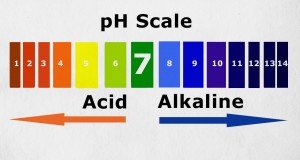Lack of exercise is the fourth leading risk factor for premature death
(NaturalHealth365) At first glimpse, there would seem to be nothing inherently dangerous about sitting in a chair or sofa, watching TV or working on a laptop – right? But, appearances can be deceiving – especially if you don’t exercise on a regular basis.
Sitting for many consecutive hours a day, unrelieved by physical activity, constitutes a sedentary lifestyle – and the associated health risks are grave. In 2014, the World Health Organization released a list of the five main causes of premature death worldwide. Shockingly, lack of exercise ranked fourth – right behind high blood pressure, smoking, and elevated blood sugar.
The truth is: when it comes to cutting life expectancy, lack of exercise is more of a threat than being overweight or obese – and may account for close to 10 percent of all premature deaths. Fortunately, the formula can be reversed.
The “heart” of the matter: Exercise helps protect against cardiovascular disease and diabetes
Cardiorespiratory health – the efficient functioning of the heart and lungs — is (unsurprisingly) linked to improved health and longevity. According to researchers, there is no pharmaceutical medication on the planet more effective than cardiorespiratory fitness in reducing the risk of chronic disease and death – quite a ringing endorsement for exercise.
Simply put, regular physical activity improves cardiovascular risk factors such as blood pressure, inflammation, glucose and insulin metabolism, endothelial function, cerebral blood flow and lipids in the blood. Getting sufficient exercise can reduce risk of heart attack by a substantial 30 percent – and several studies have shown that exercise can benefit existing cardiovascular disease.
Note: it’s best to consult with a trusted, medical doctor – before starting an exercise program – especially if you have medical issues.
Regular exercise also protects against diabetes by increasing insulin sensitivity and controlling blood sugar, blood pressure and levels of fats in the blood. Studies have shown that combining physical activity with weight loss can lower the risk of type 2 diabetes by an astounding 58 percent in high-risk groups.
Exercise not only helps prevent diabetes, but can help reverse it. Studies show that increasing physical activity (with calorie restriction) can lead to partial or complete remission of diabetes in over 10 percent of patients within one year.
Exercise helps to maintain brainpower and memory – while reducing the risk of dementia
Soaring rates of neurodegenerative disease have caused researchers to race to discover effective methods of prevention. And their studies suggest that exercise could be among the keys to protecting against Parkinson’s disease, Alzheimer’s and other forms of dementia.
Researchers know that exercise prevents cognitive decline and protects neurological health – and they even know some of the reasons why.
Physical activity improves the transmission of information between nerve cells, while increasing levels of brain-derived neurotrophic factor – an essential signaling protein that helps to regulate brain plasticity. (Plasticity is the ability of the brain to modify its connections and adapt to experience).
In addition, regular physical exercise improves the clearance in the brain of amyloid-beta, a protein associated with Alzheimer’s disease. One study showed that aerobic exercise – such as running, swimming, walking or dancing – increased production of BDNF in the hippocampus, the section of the brain involved with learning and episodic memory.
Aerobic exercise also mitigates brain shrinkage, the loss of brain volume that occurs with age.
Not only is exercise beneficial later in life – but in young adulthood as well. In a study of over 2,700 individuals aged 18 to 30 years, researchers found an association between aerobic fitness and better verbal memory in middle age.
In a review published in Alzheimer’s and Dementia in 2015, the authors reported that middle-aged participants who engaged in recreational physical activity were less likely to develop dementia 28 years later, compared with those who were less active.
And, one study showed that progressive muscle training in aged humans not only caused improvements in memory capacity – but actually increased the size of the hippocampus.
Exercise protects our DNA and mitochondria
Other research has shown the ways in which exercise promotes health at a cellular level.
Physical activity protects cell DNA against oxidative damage, while helping to rejuvenate mitochondria, the all-important “battery pack” of our cells. One study showed that resistance exercise decreased oxidative DNA damage in aging individuals, while promoting mitochondrial biogenesis. In other words, exercise enhanced the production of new mitochondria in muscle and brain tissue.
And, the act of exercising activates an enzyme called AMPK, or adenosine monophosphate-activated protein kinase – which promotes the burning of fats and glucose.
Exercise can even benefit the “friendly” gut bacteria that maintain health. Animal studies have shown that physical activity improves the diversity and balance of the microbes living in the digestive tract. And a healthy balance of intestinal microbiota may help to maintain healthy weight – thereby helping to protect against obesity, metabolic syndrome, diabetes and a related constellation of disorders.
Exercise combats diseases related to aging
One of the most heartening features of exercise is the beneficial effect it can have later in life, when maintaining muscle strength and functional capacity pays off in a decreased risk of disease and disability.
Regular physical activity helps to ward off sarcopenia – the age-related loss of muscle mass and strength – as well as osteoporosis, defined by low bone mass and greater fracture risk. Sarcopenia and osteoporosis not only increase the risk of broken bones and falls, but are associated with decreased mobility, frailty and a higher risk of death.
Once again, aerobic exercise and resistance training can come to the rescue by Increasing bone mass and muscular strength – along with balance, coordination and mobility. Reviews of literature have revealed a consensus: exercise is the single natural intervention that can consistently improve sarcopenia in older adults.
Note: It’s not necessary to bench press, pedal your bicycle into the next county or slice through the water like an Olympic swimmer to obtain benefits from exercise – especially if you are of mature years. Studies have shown that even modest exercise – as little as 75 minutes of brisk walking a week – can help prolong life.
So, what are you waiting for? Get moving and help yourself to create a longer, healthier life.
Sources for this article include:
HopkinsMedicine.org
LifeExtension.com
LifeExtension.com
NIH.gov











